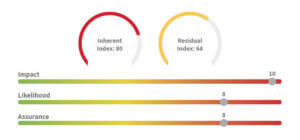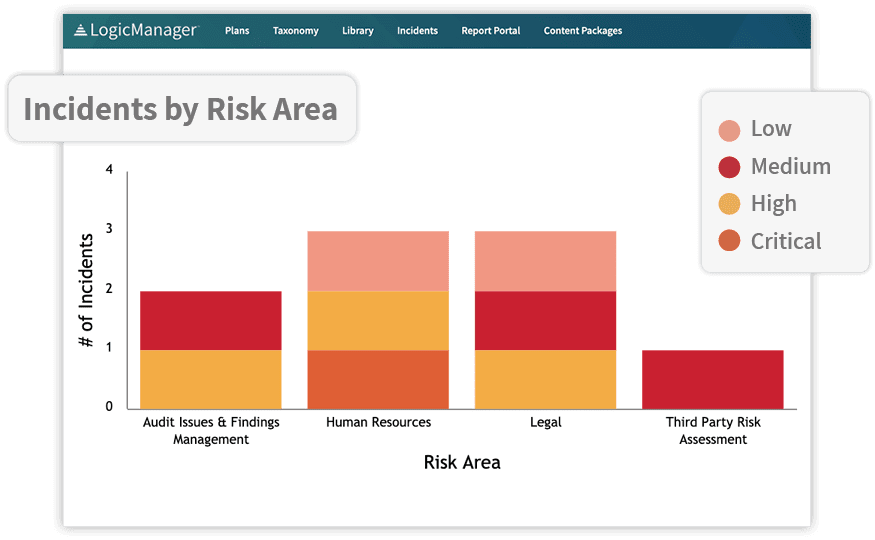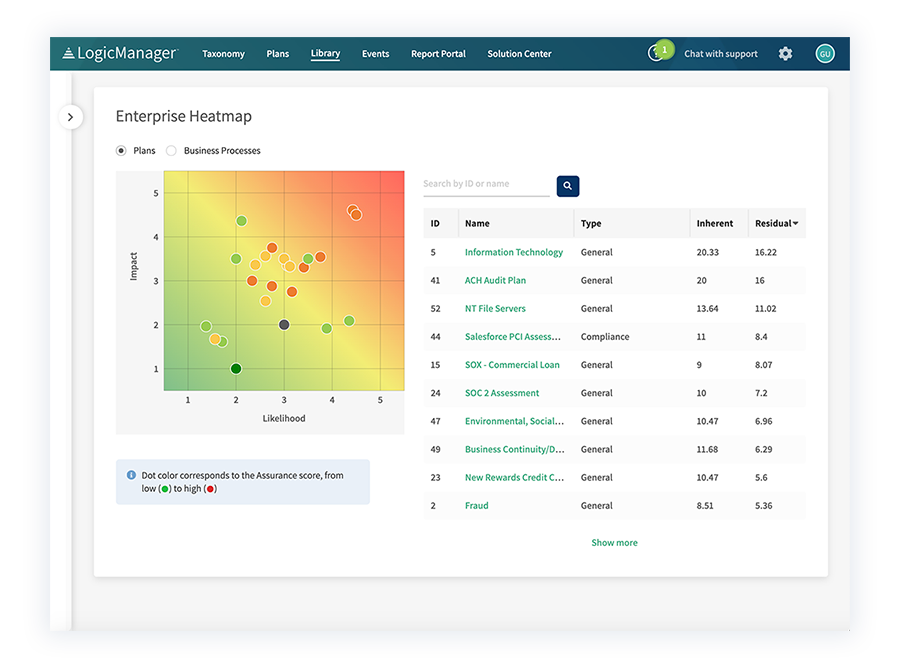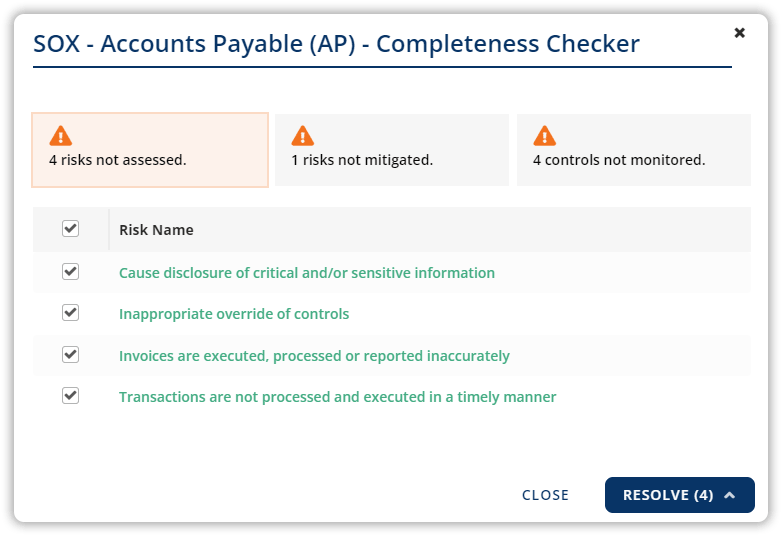What Is A Risk Management Plan?
Last Updated: October 3, 2024
Risk management is all about planning: planning for what might go wrong if x happens; planning y as a reaction for when something does, in fact, go wrong. Depending on what you’re working on at your business, you are up against a unique variety of potential risks.
In order for your business to succeed, it’s important to continuously evolve – and there are always ways to improve and expand your business. We’ve come to know these temporary initiatives with distinct deliverables as “projects.”
Some common examples of projects an organization may take on include:
- Building or closing a facility
- Re-branding
- Developing or discontinuing a product or service
- Migrating to a new software
- Expanding or reducing service to a particular industry
- Training a new group of employees
Taking a risk-based approach to new projects means thinking about the implications of any new project on all other areas of your organization. The best place to start is by creating a risk management plan to steer your team and organization in the right direction throughout the course of the project.
This guide will explain “what is a risk management plan?” Describe the purpose of a risk management plan, share what should be included in a risk management plan and provide examples of everything along the way.
Table of Contents
What is a risk management plan?
A risk management plan is a term used to describe a key project management process. A risk management plan enables project managers to see ahead to potential risks and reduce their negative impact. A new project welcomes in new opportunities but also potential risks so a risk management plan is a must for risk project managers.
In order to effectively manage the project and lead their project team to a successful outcome, they may develop and defer to a project risk management plan throughout the duration of the project.
What is the purpose of a risk management plan?
The purpose of a risk management plan is to help you identify, evaluate and plan for possible risks that may arise within the project management process. Think of it as a blueprint walking you through every stage of construction, including potential areas where demolition may be needed, external contractors may be hired, or budget may be stretched.
What is included in a risk management plan?
Risk Identification
Identifying the risks that may be associated with taking on a new project or continuing an existing one should be the first step to developing your risk management plan. Failure to conduct risk identification and identify risks ahead of time can lead to a number of negative financial outcomes that don’t reduce the impact of the risk, especially those that are high risk:
- Inadequate employee training can lead to incompetence’s, which can lead to disgruntled customers and ultimately loss of business.
- Building a new facility in a flood-prone area without purchasing flood insurance can lead to substantial sunken costs.
- Investing R&D into a new product that fails to excite the market takes a toll on your business valuation, which can turn investors away.
The list goes on. Ultimately, formalizing the process of identifying new risks lets you take a step back and notice systemic risks that may not have otherwise been uncovered had the proper time not been invested in this key part of risk analysis.
Project risk assessment
Next, for a project manager, it’s important to think about the implications of any new or existing project on all other areas of your organization. Conducting a project management risk assessment on that project will help reveal those implications ahead of time so you can effectively prevent undue risk. It’s important to be sure to assess risk in a uniform fashion. One of the best ways for a risk owner to do this is by prioritizing data and risk metric collection.
Risk assessment matrix
A risk assessment matrix is the best way for a risk project manager to collect and aggregate data used during your risk assessment. It’s created to help you identify the overlapping activities that crowd your risk management plan. The risk assessment matrix is essential in determining and defining the level and the implications of any particular risk.
Start by addressing a particular business area. Then, include a description of a risk that may be associated with that business area. Continue on by completing a risk analysis: identify the source of the risk, what could go wrong, and the impact of the risk. Then, you’ll need to decide the likelihood and assurance of the risk occurring.
Many organizations use a high-medium-low scale when assessing risk, but this actually isn’t best practice. High-medium and low scales make it difficult and time-consuming to quantify, aggregate, and objectively rank information. With only three options to choose from, they’ll likely feel conflicted about which one to choose. In reality, best practice favors a 1-10 scale, with 10 having the most unfavorable consequences to the organization.
This is something that helps to prioritize risks. You find out more about the risk prioritization process here.
Example
Let’s take a look at the line items to assess a risk associated with re-opening an office amidst the pandemic:
-
- Risk: Inadequate policies to prevent the spread of the virus to employees and/or visitors.
-
- Risk analysis: what can go wrong?
-
- Employees become uncomfortable wearing their mask for too long and decide to remove it while conversing with colleagues. Virus is then spread throughout the workforce.
- Customer refuses to wear a mask out of principle and must be asked to leave the premises, causing a scene.
- Employees and/or customers do not stay 6 feet apart from one another.
Risk Appetite Response Plan
After you’ve identified and assessed your risks the next step of any risk analysis project focuses on determining how you will respond to those risks. Risk response involves developing strategic options that can increase positive outcomes and reduce risk.
Your risk response plan should determine which actions you take in order to experience the most positive outcome and also consider your own risk appetite and tolerance levels. Critical elements that will help define your risk response are risk mitigation and risk monitoring.
Risk Mitigation
The efforts you take (or plan on taking) to control the risk being assessed should be included within your risk assessment matrix. This part of the project management risk process is referred to as mitigation. Risk mitigation is defined as the process of reducing a risk event and minimizing the likelihood of a potential risk.
Considering the above scenario, here are a few mitigations that might be developed and included within your matrix and overall plan:
- Enforcing strict consequences for employees who are caught not wearing their mask. Dedicating particular areas outside where employees can go to take a break from wearing their mask at lunch.
- Hanging signs on the front door that refuse people entry without a mask. Stationing employees at the front door who do not let anyone in without a mask.
- Placing dots six feet apart from one another to instruct people on where to stand in line and prevent crowding.
As you can see these help to create a contingency plan against negative impact.
What is a Risk Register?
A Risk Register is a document that contains all of the information we’ve mentioned thus far: the risks you’ve identified and assessed, as well as the results and risk response plan. Many people choose to create a Risk Register to steer them throughout every project, particularly throughout the monitoring phase.
Risk Monitoring
Monitoring risk over the course of the project should be an ongoing and proactive part of risk analysis. It involves project management to conduct consistent testing by the risk owner throughout the project, metric collection, and incidents remediation to certify that your efforts are on track to be completed, aligned with your strategic goals, and allowing your mitigating controls to remain effective. Continually monitoring your risks also allows you to identify and address emerging trends to determine whether or not you’re making progress on more long-term initiatives.
Risk monitoring helps you create key connections between risks, business units, mitigation activities, and more. This way, you’re able to paint a more cohesive picture of your organization as a whole. Completing your monitoring activities within LogicManager, a comprehensive ERM platform, you inherently break down organizational silos and ultimately eliminate the chances of missing critical pieces of information.
Reporting On Your Risk Management Plan
If you’re a project manager, it’s likely that you have a more holistic, bird’s eye view of the project’s progress than the rest of your project team. While they’re focused on completing day-to-day tasks to complete a larger initiative, you’re looking at the bigger picture.
One of the best ways to communicate that bigger picture to your project team is through reports. Presenting information about your project – as well as everyone’s alignment with your risk management plan – demonstrates effectiveness and strong leadership, and can rally the support of various stakeholders.
Examples of reports for your risk management plan
It’s important that these risk reports are engaging and easily digestible so that your project team has a clear understanding of where their efforts and the work of their team members stands. LogicManager’s risk reports are built on powerful taxonomy technology that centralizes information and breaks down silos. Our software comes with a wide range of reports that enable you to do anything from checking the status of outstanding tasks and reviewing incidents, to proving compliance and ensuring policies are up to date.
Achieve your risk management plan with LogicManager
As a Project Manager, risk is just one of your many duties; but it’s an integral one. Identifying the risks that may threaten the successful completion of your capital, strategic and tactical goals is the only way to ensure everything stays on trajectory.
But you’re also responsible for prioritizing and tracking the status of the project (and possibly many others) all the while respecting your project team’s time, the quality of the results, and your budget. Reporting is a must as you communicate the risks, opportunities, and needs of projects to stakeholders like your project team, senior management, and the board.
Without project risk management software, staying on time, on budget, and on scope is difficult.
- Spreadsheets and emails make information hard to collect, update and share.
- Engaging the proper business units and subject matter experts requires an unnecessary amount of effort without an automated system.
- Knowing where to start a project risk assessment is a headache without a framework of project risk management tools.
- Reporting is inefficient when you have to hunt down information across disparate systems.
It’s a hard job, but LogicManager makes it easy by erasing all your pain points at once.
- Prioritize your organization’s most critical projects and identify potential risks with intuitive and objective project risk assessments.
- Create and link mitigation activities to the risks, resources, and processes they impact with taxonomy technology.
- Confidently embark on new projects with one standardized framework.
- Enhance collaboration and communication across the enterprise with automated workflows, notifications, and reminders.
- Maintain your responsibilities and track the status of your projects with easily accessible to-do lists.
- Align with industry best practices like ISO by leveraging ready-made libraries of standards and regulations.
- Track project incidents and outline steps towards maturity with integrated incident management capabilities.
- Effectively communicate status, timeline, and risks to the board with ready-made, highly configurable reports, and dashboards.
Ready to make project risk management easy with LogicManager? Request a demo today and see how our software can help you prioritize your projects, streamline communication, and ensure successful completion.
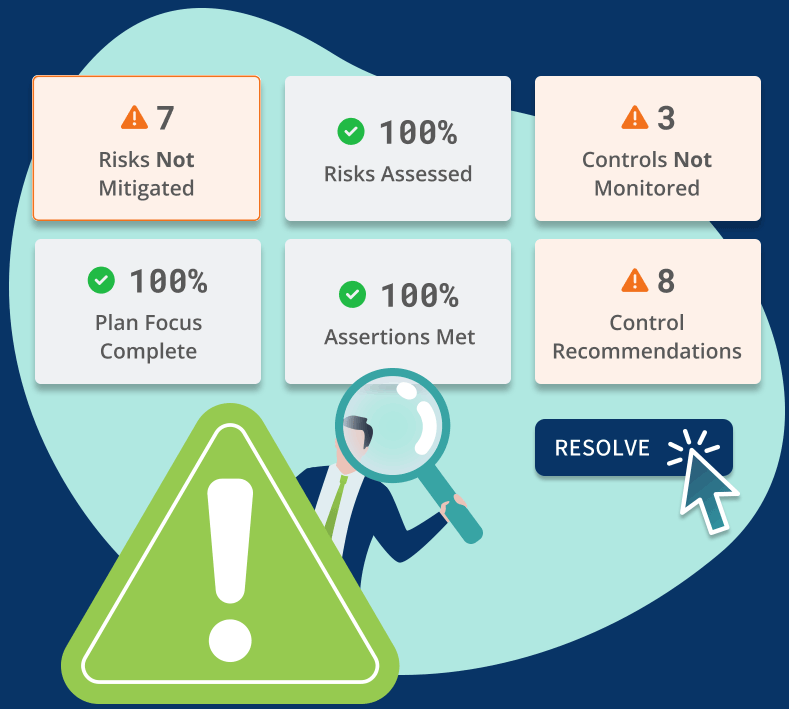
Ensure there are no gaps in your risk management plan with LogicManager’s new One-Click Assurance tool
One-Click Assurance automates the detection of gaps in your risk management plan, ensuring no potential threats go unnoticed by cross-referencing data across various departments and third-party relationships. After identifying any gaps, the tool provides actionable guidance for remediation, enabling risk managers to address identified risks efficiently and proactively.


